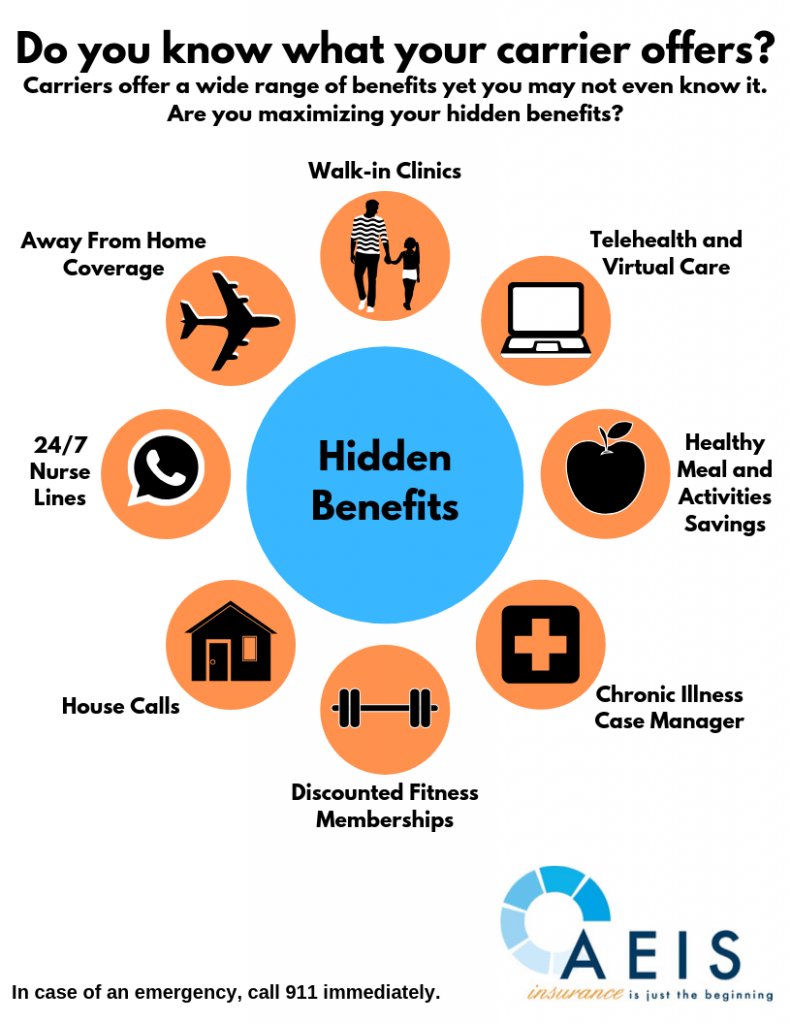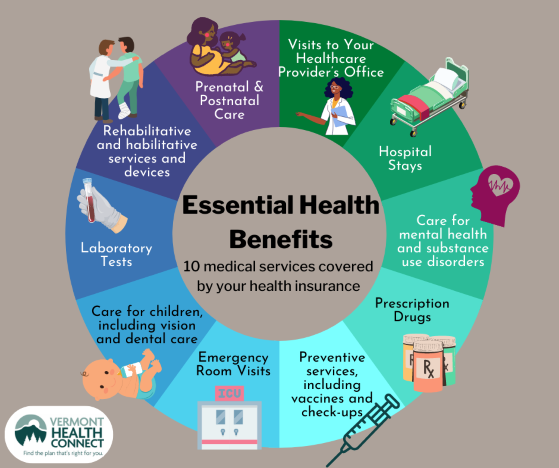5 Easy Facts About Medicare Advantage Agent Described
5 Easy Facts About Medicare Advantage Agent Described
Blog Article
Indicators on Medicare Advantage Agent You Need To Know
Table of ContentsSome Known Factual Statements About Medicare Advantage Agent More About Medicare Advantage AgentThe Definitive Guide to Medicare Advantage Agent

adheres to from confusing the reasonably young age profile of the uninsured with the far better wellness, usually, of younger persons. This obscures the web link between health status and medical insurance. For those without access to office medical insurance, inadequate health is a prospective obstacle to buying nongroup protection due to the fact that such protection might be very priced, exclude preexisting problems, or be just inaccessible. The variety of uninsured Americans is not especially big and has actually not transformed over the last few years. Seven out of ten respondents in an across the country representative survey thought that fewer Americans lacked medical insurance than really do(Fronstin, 1998). Approximately fifty percent(47 percent )believed that the number of people without health insurance reduced or continued to be constant over the latter half of the last decade(Blendon et al., 1999). This drop of nearly 2 million in the number of people 'without insurance coverage (a decrease
of about 4 percent)is certainly a positive change. With a softer economy in 2000 the most recent reported gains in insurance coverage might not continue(Fronstin, 2001 ). The decline in the variety of without insurance will certainly not continue if the economic climate remains slow and health and wellness care prices proceed to outpace rising cost of living. This is because the data were accumulated for a duration of solid economic performance. Of the approximated 42 million individuals who were without insurance, almost regarding 420,000(regarding 1 percent)were under 65 years of age, the age at which most Americans end up being eligible for Medicare; 32 million were adults in between ages 18 and 65, around 19 percent of all adults in this age; and 10 million were youngsters under 18 years old, regarding 13.9 percent of all kids (Mills, 2000). These quotes of the number of individuals without insurance are generated from the yearly March Supplement to the Existing Population Survey (CPS), performed by the Demographics Bureau. Unless otherwise kept in mind, nationwide estimates of individuals without wellness insurance policy and proportions of the populace with different kinds of insurance coverage are based on the CPS, one of the most commonly used source of estimates of insurance protection and uninsurance rates. These studies and the estimates they yield are defined briefly in Table B. 1 in Appendix B - Medicare Advantage Agent. These surveys vary in dimension and sampling methods, the questions that are asked concerning insurance policy
Some Known Details About Medicare Advantage Agent
protection, and the moment duration over which insurance protection or uninsurance is determined(Lewis et al., 1998, Fronstin, 2000a ). Still, the CPS is particularly valuable because it produces annual price quotes reasonably quickly, reporting the previous year's insurance coverage estimates each September, and due to the fact that it is the basis for a regular set of price quotes for greater than twenty years, enabling for evaluation of fads in coverage with time.

Indicators on Medicare Advantage Agent You Need To Know
Over a three-year period beginning early in 1993, 72 million people, 29 percent of the united state populace, lacked insurance coverage for at the very least one month. Within a single year(1994), 53 million people experienced at the very least a month without coverage(Bennefield, 1998a). Six out of every ten without insurance grownups are themselves used. Functioning does enhance the likelihood that one and one's household participants will certainly have insurance policy, it is not an assurance. Even members of family members with 2 full time breadwinner have almost a one-in-ten chance of being without insurance (9.1 percent without insurance rate)(Hoffman and Pohl, 2000 ). The partnership between health and wellness insurance policy and access to care is well developed, as recorded later in this chapter. The connection in between health insurance policy and health end results is neither direct nor simple, a considerable scientific and health services research literary works web links wellness insurance protection
to improved access accessibility care, better qualityTop quality and improved boosted and population populace health and wellness. The second record, on personal health end results for without insurance grownups, is stood for by the inner Full Article circle of the figure, while the third record, check my source on family health, includes the topics of the 2nd report however highlights a various unit of evaluation, namely, the family. The 6th record in the collection will certainly present details regarding techniques and initiatives carried out locally, statewide, or country wide to resolve the lack of insurance and its unfavorable effects. Degrees of analysis for checking out the impacts of uninsurance. This discussion of health and wellness insurance policy coverage concentrates primarily on the united state populace under age 65 because basically all Americans 65 and older have Medicare or various other public insurance coverage.
Moreover, it concentrates especially on those without any medical insurance for any type of size of time. The problems dealt with by the underinsured are in some respects comparable to those dealt with by the uninsured, although they are usually much less severe. Uninsurance and underinsurance, nonetheless, include noticeably various plan concerns, and the approaches for addressing them may differ. Throughout this research and the five records to comply with, the primary emphasis is on individuals without any medical insurance and thus no aid in paying for wellness treatment past what is available via charity and safeguard organizations. Health insurance coverage is an effective factor affecting invoice of care due to the fact that read the full info here both patients and doctors react to the out-of-pocket cost of solutions. Medical insurance, nevertheless, is neither needed neither enough to acquire accessibility to medical solutions. Nonetheless, the independent and straight impact of health
insurance coverage on access to wellness solutions is well developed. Others will certainly obtain the healthcare they require also without health and wellness insurance coverage, by spending for it out of pocket or seeking it from service providers who provide care complimentary or at very subsidized prices. For still others, wellness insurance policy alone does not ensure invoice of care due to other nonfinancial obstacles, such as a lack of healthcare carriers in their area, restricted access to transport, illiteracy, or etymological and cultural distinctions. Formal research study regarding without insurance populaces in the United States dates to the late 1920s and early 1930s when the Committee on the Price of Treatment created a series of reports concerning funding medical professional workplace brows through and hospital stays. This problem came to be prominent as the numbers of clinically indigent climbed throughout the Great Anxiety. Empirical research studies regularly sustain the link in between access to care and improved wellness end results(Bindman et al., 1995; Starfield, 1995 ). Having a normal resource of treatment can be taken into consideration a predictor of accessibility, instead of a direct step of it, when health end results are themselves utilized as access indicators. This extension of the idea of access dimension was made by the IOM Board on Monitoring Gain Access To to Personal Healthcare Solutions(Millman, 1993, p. Whether moms and dads are guaranteed shows up to impact whether or not their youngsters obtain care as well as just how much careeven if the youngsters themselves have insurance coverage(Hanson, 1998). The wellness of parents can affect their ability to take care of their youngsters and the degree of family members stress and anxiety. Fretting about their kids's access to care is itself a source of tension for parents. 3 phases comply with in this record. Phase 2 offers an introduction of how employment-based health insurance, public programs and specific insurance coverage operate and communicate to offer considerable however insufficient insurance coverage of the U.S. population. This consists of an evaluation of historic fads and public laws influencing both public and exclusive insurance, a conversation of the interactions amongst the various sorts of insurance policy, and an examination of why individuals move from one program to an additional or end up

Report this page